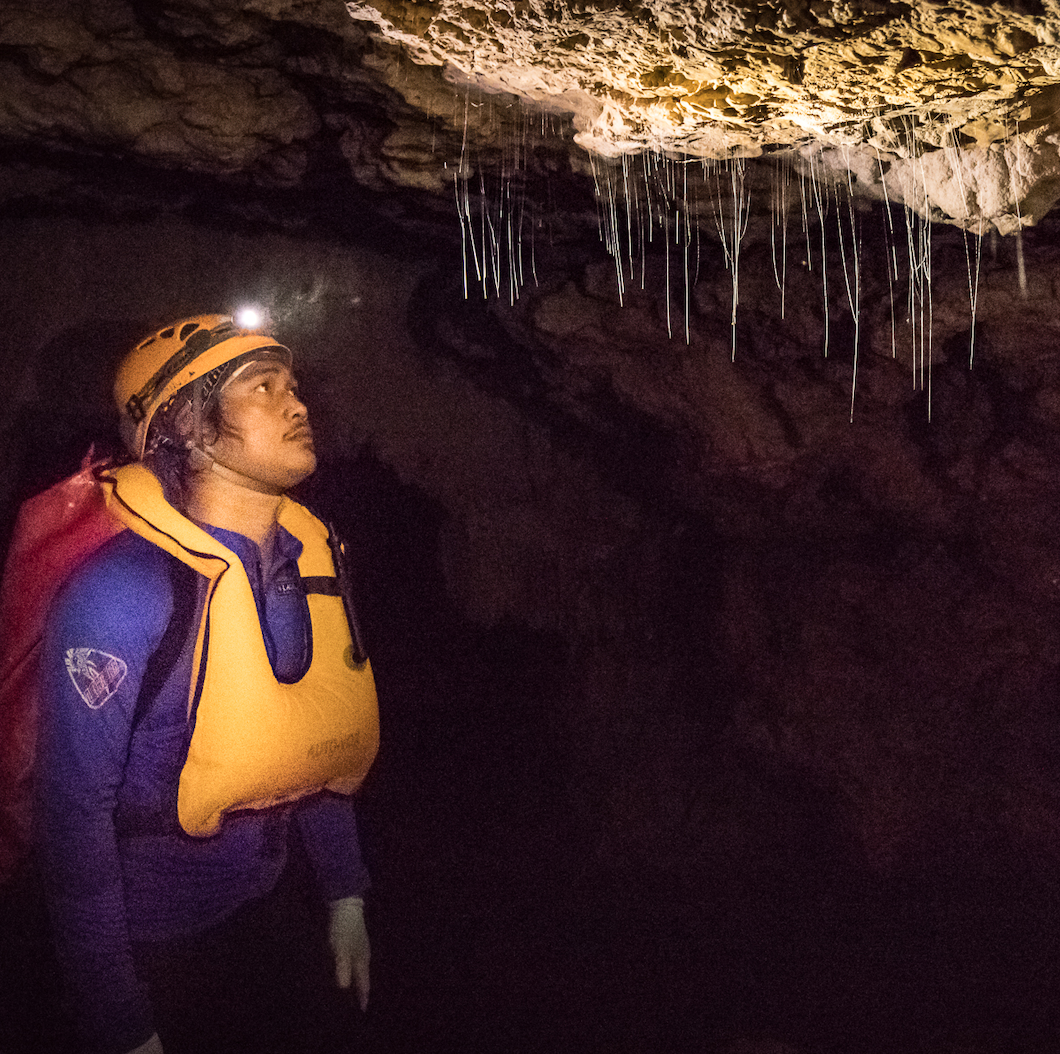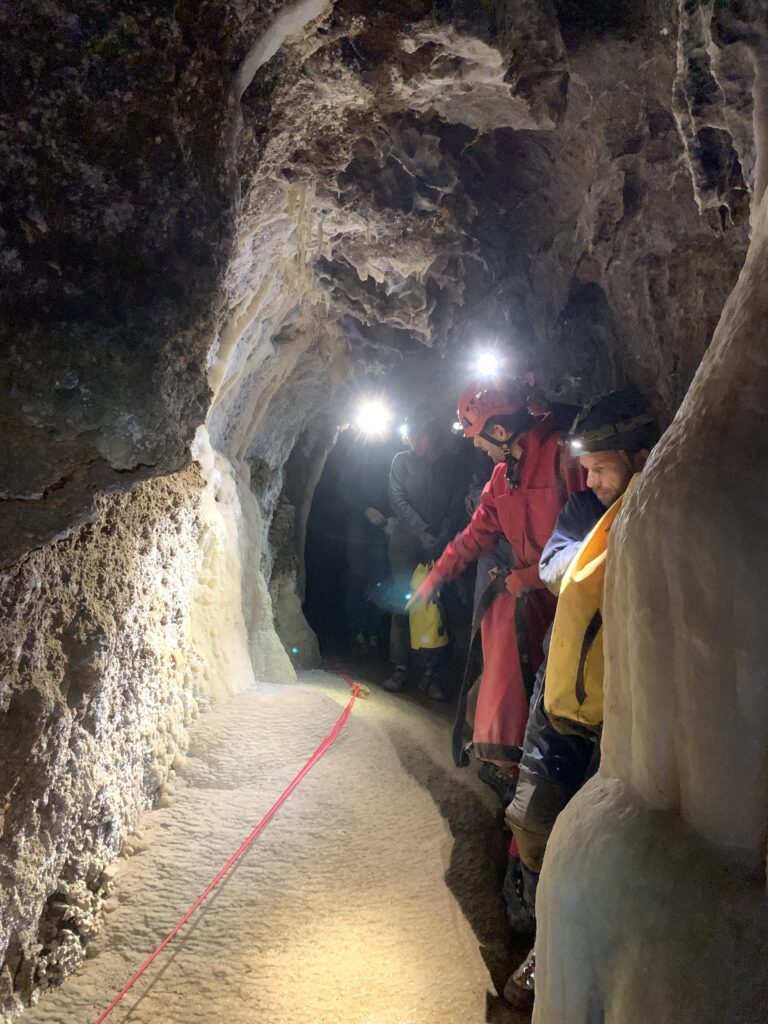
Take nothing but pictures,
leave nothing but footprints,
kill nothing but time.
~NSS Motto
Low Impact Caving
Every time someone enters a cave, they impact the cave in some small but cumulative way. Even tiny amounts of floating dust will settle on cave walls and dull incredible minerals over time. The goal of responsible cavers is to minimize the impact of cave visits and leave the cave without a trace. Careless caving can cause permanent damage. Formations can never grow back to their former beauty, and once damaged they are altered forever.
Complex structures that have taken tens of thousands of years to form can be irreparably broken in a single moment. A muddy hand-print can permanently mar formations and can inhibit future growth. It is crucial to move only intentionally and thoughtfully while in underground spaces. Even a single misplaced footprint can forever change the landscape.
Caves are Sensitive
Caves are extremely sensitive environments. Many of the creatures that inhabit caves are uniquely adapted to the cave the environment, only exist in a handful of locations, and even today new species are being discovered in California’s caves. Many species of bats, some endangered, inhabit caves and when aroused during their winter hibernation period often die. Water pollution, trash, and human waste may poison other cave life. And an accidental step may crush it out of existence.
Bones and artifacts found in caves are often very fragile. Frequently the manner in which they were deposited and preserved is as important scientifically as the objects themselves. Much of the scientific value of these finds can be lost when they are disturbed by anyone but a trained professional.
Doing More for Cave Conservation
Cave conservation goes beyond responsible caving. The Southern California Grotto participates in and encourages a variety of conservation activities, including educational programs, cave restoration projects, cave gating and protection, and assisting government agencies and private landowners in cave inventories and developing management plans for caves and karst areas. Southern California Grotto members have contributed countless hours of volunteer time and labor to protect these invaluable resources, both locally and nationally.
Flagging tape marks a trail established by cavers to minimize impact to the flowstone floor or other delicate areas. Cavers who place the tape, restore damaged areas, or participate in other conservation efforts proactively help to restore and preserve unique cave environments.

Caves are Protected
To help preserve our cave resources for future generations, there are laws protecting them. California, like many other states, has enacted legislation to protect cave resources from being irreparably damaged. In California it is illegal to:
- Write or mark on the walls
- Litter in caves or dump carbide
- Break or remove formations
- Disturb bats or other living organisms
- Remove or disturb historic or prehistoric artifacts and bones
White Nose Syndrome
In recent years, white nose syndrome has killed millions of bats in North America. White nose is caused by the fungus Pseudogymnoascus destructans, which infects the skin of hibernating bats and may cause distinctive white growths or altered behavior. It has devastated bat populations on the East Coast and was first detected in California in 2019.
Cavers should thoroughly clean all gear using an advised WNS protocol between cave visits, consider using separate gear if traveling to an area with known WNS, and obey any local cave closures due to the fungus or the presence of hibernating bats.
Leave each cave as you found it, and join with us to preserve and protect them.